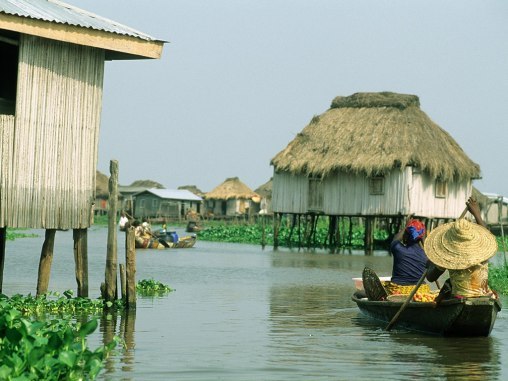By Ken Jennings, CNTraveler.com
Cotonou is the largest city in Benin, a small West African republic on the Gulf of Guinea. In 1855, the French dug a lagoon canal connecting Cotonou's ocean coastline with Lake Nokoue, the large lake to the north. On the northern shore of that lake, far from the chaotic traffic and crowded markets of Cotonou, sits a very different kind of city. Ganvie is Africa's largest town on stilts.
In the 17th century, with the Portuguese slave trade booming in Africa, a tribe called the Tofinu fled toward Lake Nokoue, pursued by slavers of the Fon tribe, from the powerful West African kingdom of Dahomey. Religious beliefs prevented the Fon from fighting on the sacred lake, so the lagoon became a haven for the Tofinu -- as long as they never returned to dry land. So they created a new home for themselves, miles from the shore.
See Also: How Google Earth Led to the Discovery of a Long-Lost Forest
Today, 500 years later, the Tofinu settlement in the middle of the lake has grown into Ganvie, a bustling town of over 30,000 residents who live in bamboo huts built on stilts. Instead of livestock and chickens, residents farm fish in pens made of reeds and palm fronds. Instead of walking or biking to a neighbor's house, villagers row dugout canoes. You can see why visitors call it the "Venice of Africa."
Ganvie's 3,000 buildings include a post office, a bank, a hospital, a church, and a mosque. The village school is one of the few buildings not on stilts; it's located on a patch of dry land big enough for kids to play soccer after class. Residents are currently bringing soil on to the lake to make a second island, which will serve as a cemetery.
Ganvie was submitted to UNESCO's World Heritage List in 1996, and boat rentals on the lake have made it one of the nation's most popular tourist attractions. One piece of advice: don't drink the water. A floating village without a sewage system may be picturesque, but it's not the smartest place to take a swim.
PHOTO: AGE FOTOSTOCK SPAIN, S.L. / ALAMY
More from Condé Nast Traveler:
